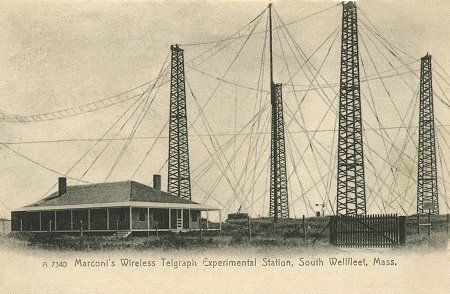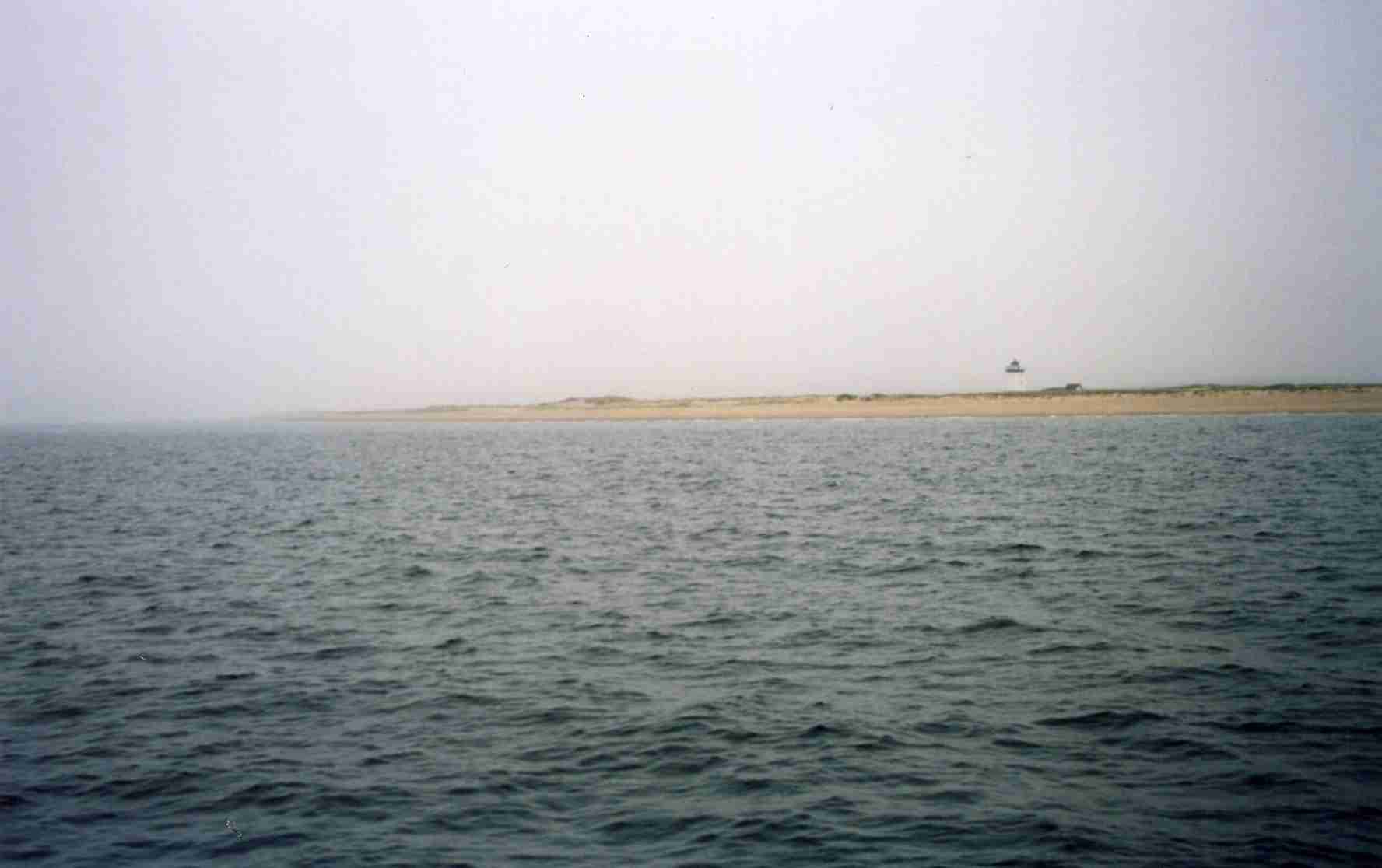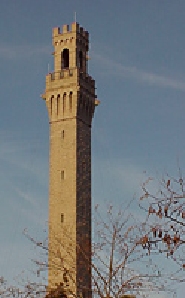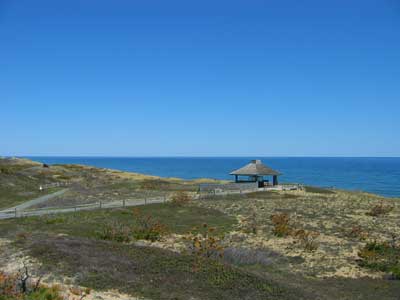
History

 |
History |
 |
Cape Cod is full of history, from the Kennedys to early fishing and whaling to the birth of the U.S. tourist industry to Native American tribes. But on a short visit, you don't have time for everything. There are two must see stops, however. The first is the Pilgrim Monument, the second Marconi Station. The Pilgrim monument, shown above right from a boat entering the harbor, towers over Provincetown. It marks the actual first encounter of the Pilgrims and the Mayflower with the New World, another of those chapters the history books mysteriously skip. Caught in a hurricane, the Mayflower was badly damaged and blown days off her course, which was supposed to take her to Chesapeake Bay and a land grant just above Jamestown. With her rudder split, masts down and the main beam running the length of the ship snapped in the middle, the ship was at the mercy of the winds and currents. Using a "giant jack screw" they had brought to build houses with, the Pilgrims braced up the main beam to keep the ship afloat, and they had to keep bailing water from leaks. |
 |
 |
Miraculously, wind and currents brought the ship to the tip of Cape Cod. Their first view of the New World (without the lighthouse and monument) is shown above right. This is Race Beach, pictured from land at left. Notice the shoals (light colored patches of water), which Captain Christopher Jones mentions in his log. As the ship approached land, it was caught by the "Race Current," a strong riptide moving along the outer cape and is dangerous to swimmers, kakayers and sailors. The Race Current pushed the Mayflower around the point and to the mouth of Provincetown Harbor, where the tide carried it on in. Little wonder they were convinced God was on their side. Their plan was to anchor, repair the ship, sail South to their original course, and continue on to Chesapeake Bay. But by the time they cut trees, trimmed and fit new masts, beam and rudder, recalked the hull, and crafted new sails, it was December. Winter was upon them, several vicious storms had already swept down from the North Atlantic, and they thought it best to establish their colony where they were. |
But that meant their original charter was invalid. So there in Provincetown Harbor, they drafted a new one, called the Mayflower Compact. In the meantime, however, Native Americans lurking continuously along the dunes and tree cover worried the group, which had too few people to fight. So they sent men in the small boats called shallops to find a less inhabited place. After six weeks of exploration, they returned with news of Plymouth Harbor over on the mainland. The Mayflower, restored to perfect sailing condition, was moved there for its famous rendezvous with Plymouth Rock and destiny. The Pilgrim Monument was modelled after a similar tower in Sienna, italy. President Teddy Roosevelt laid the cornerstone in 1907 and President Howard Taft dedicated it in 1910. The granite blocks were shipped from Maine. The 252 foot high structure has 116 steps and 60 connecting ramps, so getting to the top takes a little exertion, but the view is spectacular. You can see the town laid out below you, with the harbor off to the North, Race Beach where the Mayflower first washed up to the East, and all of Cape Cod stretching out to the West. On a clear day, with binoculars, you can see the Boston skyline on the horizon. Consider wearing a jacket because the wind really batters you up on that observation deck. When you get back to the base, you can tour the museum, which deals with whaling, fishing, the Mayflower, the Pilgrims, Native Americans, and the beginnings of the tourist industry. Admission is $7 and covers both tower and museum. In June, it closes at 4. From July to Labor Day it's open until 6. If you park down at the waterfront for a whalewatching expedition, you're better off to stay parked there and walk the two blocks to the monument, as it has limited spaces. |
 |
 |
The other stop you must make is Marconi Station. To get there from Provincetown, just drive down Route 6A and turn left. From Paine's Campground it's only a two mile bike ride. From Wellfleet, it's four miles. But it's worth the visit because of the historical significance. This was where Guglielmo Marconi sent the first American wireless message, on January 18, 1903, to the King of England. In effect, this was the birthplace of radio. The bewildering array of transmitters is shown at top left, in a scene scanned in from an old postcard we bought at the Visitor Center. These towers are no longer standing. They fell victim to storms and cliff erosion. The bases can still be seen, some of them up on the plateau, and some of them down on the beach where they tumbled. The photo at left shows the scene today, with only a small observation deck marking the spot. It contains a model of the original array. While you're here, two sidetrips are worth your time. One is the 1.5 mile loop walk into the Atlantic White Cedar Swamp. The other is the descent to Marconi Beach, which stretches for about two miles southward along the base of the cliffs. Many longtime Cape Codders consider it the most beautiful beach on the entire Cape, and it is usually uncrowded. |
|
|||
|